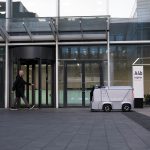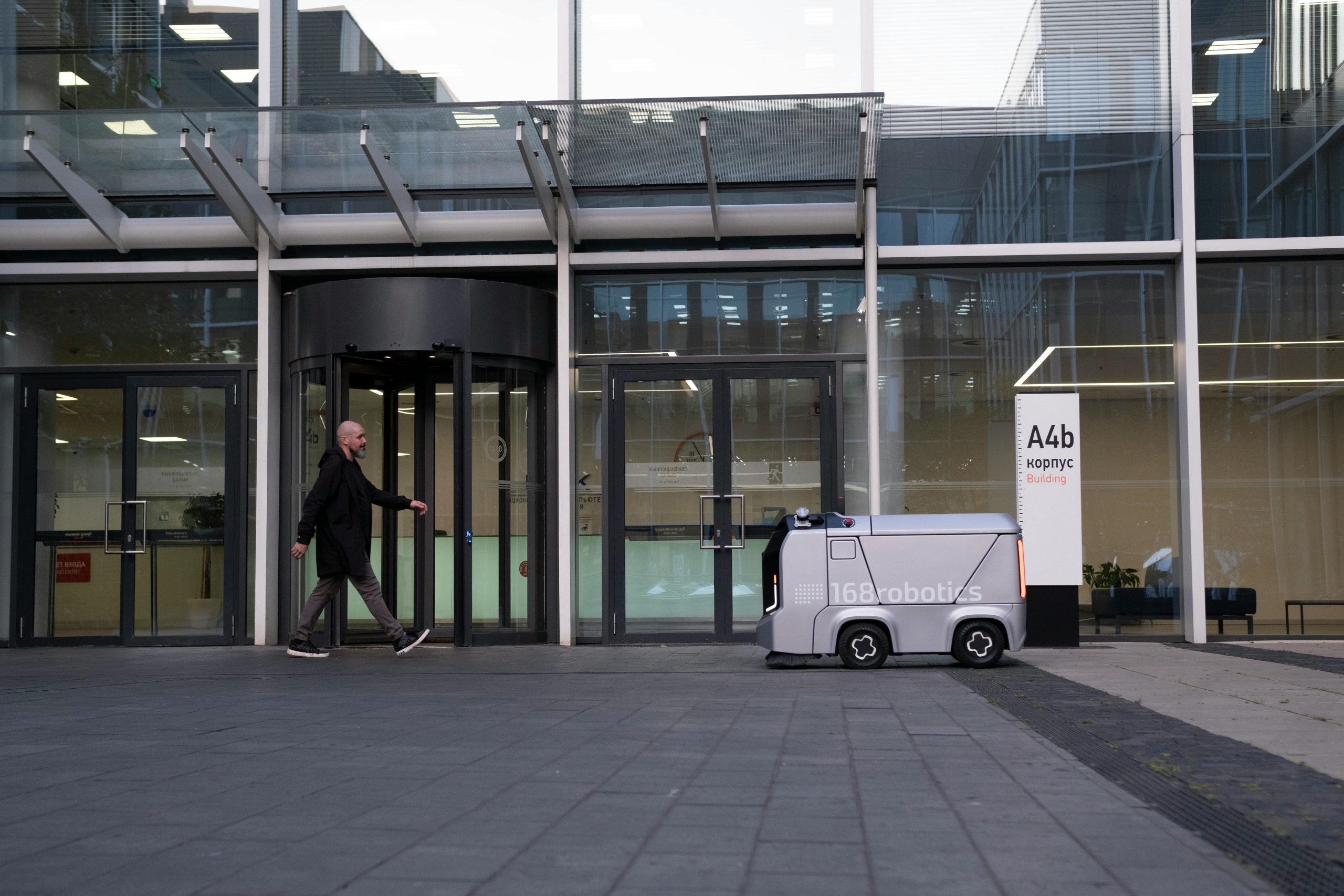The Algorithmic Alarm: Scrutiny Deepens After Parkville High AI Incident Amplifies Security Tech Concerns

The Baltimore County Public Schools (BCPS) security apparatus faced another significant wave of public and official scrutiny following a disruptive security alert at Parkville High School on Friday, November 7, 2025. Students were temporarily relocated after the district’s Artificial Intelligence (AI) threat detection system, Omnilert Gun Detect, signaled the potential presence of a weapon. This event, which ultimately proved to be a false alarm following a thorough sweep by law enforcement, marks the second high-profile technological misfire in a matter of weeks, placing the district’s multi-million-dollar investment in automated surveillance under an intense, unforgiving spotlight.
The pattern established by the Parkville incident, occurring barely a month after a similarly dramatic, yet more perilous, false alarm at Kenwood High School—where the same system allegedly identified a bag of chips as a firearm—forces an immediate and necessary confrontation with the operational integrity, ethical boundaries, and long-term legal liability of deploying advanced AI in public education settings.
Official Statements and Administrative Justifications of AI Deployment
The district’s leadership, now navigating the fallout from two high-profile false alarms involving the identical technology in late 2025, has been compelled to craft a careful, highly defensible narrative. The operational justification is now central to maintaining stakeholder confidence in the overall security strategy.
Perspectives from School District Leadership on Operational Integrity
Superintendent of Baltimore County Public Schools, Dr. Myriam Rodgers, offered a key defense following the Parkville incident, characterizing the AI’s function as precisely what it was designed to do within the established protocol. This viewpoint reframes the event from a technological failure to a procedural success, albeit a severely disruptive one. The official stance emphasized that the program’s core purpose was to signal an alert to human monitors for subsequent investigation and verification.
In this official interpretation, the AI was explicitly not intended to be the final arbiter of truth; it was constructed as a high-speed trigger engineered to compress the time between an unseen event and human awareness. The leadership argued that the system successfully achieved its primary objective: to prompt human eyes to examine the situation. This perspective serves to protect the investment in the technology by shifting the focus away from the accuracy of the initial detection and toward the appropriateness of the human reaction based on that initial prompt. It positions the system as a valuable, though imperfect, tool within a larger, human-controlled safety net, suggesting that the system is operating according to its intended parameters as a force multiplier for human vigilance rather than a replacement for it. This administrative framing is crucial for maintaining stakeholder confidence in the overall security strategy, even when specific technological components produce disruptive results.
Reassurance to Stakeholders Regarding Long-Term Security Commitments
In addressing the parents, guardians, and the wider community, school administrators consistently reiterated that the safety of the student body remains the absolute, non-negotiable top priority. This overarching commitment forms the bedrock of their public communications following any security event.
While acknowledging the disruption caused by the relocation at Parkville and the subsequent alarm generated by the AI’s report, the leadership sought to reassure stakeholders that protocols are continually being refined based on real-world data, such as the data generated by the Parkville and Kenwood incidents. The consistent message communicated in early November 2025 is one of active management and iterative improvement.
Beyond the technology itself, the administration often pivots to emphasizing the human elements of safety that remain constant: the vigilance of teachers, the swift response of School Resource Officers (SROs), and the availability of support staff. In an effort to provide tangible reassurance following the Kenwood incident, there have been commitments made regarding further specific training for staff on interpreting and acting upon the new AI-generated alerts, including promises of annual procedural refreshers. Furthermore, they have highlighted the availability of mental health resources, such as partnerships with telehealth services, recognizing the potential stress such emergency activations place on students. This dual approach—defending the technological tool while aggressively promoting human support systems—is an attempt to rebalance the narrative, assuring the community that while technology is a part of the strategy, it is not replacing the fundamental care and supervision provided by the institution’s personnel. The commitment is framed as a holistic approach to safety, where technology is one input into a comprehensive, human-centered security ecosystem.
Broader Societal and Ethical Implications of Automated Threat Assessment
The repeated activation of high-level security responses based on algorithmic interpretation—particularly the near-disaster at Kenwood High in October 2025, which involved officers drawing weapons on a student holding chips—has thrust BCPS into a national conversation regarding the responsible integration of surveillance technology in K-12 environments.
The Psychological Impact on the Student Body and Faculty
The experience of being subjected to an emergency protocol, even one that turns out to be based on an algorithmic error, carries a significant, non-trivial psychological cost for everyone involved. For students, being suddenly relocated, potentially seeing a heavy law enforcement presence, and experiencing the disruption of their academic day creates a state of acute stress and anxiety.
Repeated false alarms erode the sense of security that schools are meant to provide, breeding a kind of generalized hyper-vigilance or, conversely, desensitization. Students may begin to view the emergency signals as background noise, inadvertently dulling their response to a genuine threat in the future—a phenomenon known as the “cry wolf” effect, but driven by technology rather than human error. The Kenwood incident, which resulted in a student being handcuffed at gunpoint over a snack food, illustrates the profound potential for traumatization inherent in this technology.
For faculty and staff, the pressure to execute emergency procedures flawlessly while simultaneously managing frightened students is immense. These events force educators into roles outside their primary function, adding another layer of psychological burden to their responsibilities. The ethical dimension here is profound: is the potential for preemptive detection worth the guaranteed stress and disruption caused by frequent false positives? The technology aims to prevent a catastrophic human tragedy, but in doing so, it creates a persistent, low-grade emotional crisis within the school walls. The long-term mental health impact on a generation of students educated under this constant, though intermittent, digital surveillance warrants serious, independent study, moving beyond the immediate logistical concerns of threat neutralization.
Legal Ramifications of Automated Security Alerts
The introduction of artificial intelligence into security response chains creates novel legal ambiguities, particularly when an alert leads to an intervention that might otherwise not have occurred. When law enforcement responds to an AI-generated flag, their actions are predicated on the premise that a credible threat exists, thereby potentially justifying measures such as searches, detentions, or the use of force that might be scrutinized if the initial trigger were merely an unverified rumor.
In the case where the alert is false, as in Parkville and Kenwood, the legal examination centers on the doctrine of “reasonable response.” Did the police act reasonably based on the information provided by a system the school district itself chose to implement? The controversy surrounding the Kenwood incident, where officers drew weapons, highlights this scrutiny.
Furthermore, there are liability questions that extend upstream to the technology vendor, Omnilert, and the school district administration that procured and deployed the system. If the artificial intelligence is proven to have been negligently configured or if the district failed to follow vendor-recommended calibration procedures, grounds for institutional liability may arise. This legal landscape is underdeveloped, as courts have yet to establish clear precedents for algorithmic error in public safety contexts as of late 2025. The entire incident generates documentation, video logs, and internal communications that will inevitably become the subject of legal review, setting potential future standards for governmental reliance on proprietary artificial intelligence systems for public safety enforcement actions.
Forward Trajectory: Policy Changes and the Future of School Safety Protocols
The succession of false alarms in the fall of 2025 has moved the discussion from if AI should be used to how its use must be immediately and permanently modified. The focus has shifted to building better checks and balances around the initial alert.
Proposed Revisions to Human-in-the-Loop Verification Thresholds
The primary immediate policy change mandated by these successive false alarms centers on recalibrating the trust placed in the initial artificial intelligence signal. Future operational guidelines are expected to introduce significantly higher verification thresholds before full-scale emergency protocols, such as widespread student relocation or physical response deployment, are activated.
This involves establishing clearer decision matrices for human operators—the security personnel or administrators monitoring the alerts. The discussion now revolves around requiring secondary corroborating evidence from another, independent sensor or system before the highest level of response is authorized, effectively building an algorithmic redundancy into the system itself. For example, the system might be configured to only escalate to police dispatch if two separate AI modules simultaneously flag an object, or if the initial flag is confirmed by an active human review of the video feed within a narrow time window.
This refinement acknowledges that the purpose of the technology is to assist human cognition, not to automate executive decision-making entirely. The goal is to maintain the speed advantage of automated detection while dramatically reducing the frequency of costly and disruptive false positives by injecting more stringent, context-aware human judgment earlier in the sequence of events. This policy pivot represents a maturing of the district’s adoption strategy, moving from wholesale implementation to nuanced integration.
Long-Term Technological Evolution and Alternative Solutions
Looking beyond immediate policy adjustments, the incidents compel a broader examination of long-term technological solutions in school safety. The reliance on a single type of artificial intelligence—visual object recognition—has been shown to have inherent vulnerabilities, especially when dealing with objects whose visual profiles can be ambiguous, as demonstrated by the chip bag fiasco.
The future direction will likely involve diversification of technology to create a more robust and resilient security posture. This could mean integrating other non-visual detection methods, such as acoustic monitoring systems trained to differentiate the sound signatures of a gunshot from background noise, or enhanced passive radio frequency detection systems. The integration of 7,000 existing cameras with the Omnilert Gun Detect system suggests a significant infrastructure is already in place, but its future utility is now contingent on such technological diversification.
Furthermore, the ongoing conversation about the surveillance infrastructure will inevitably shift toward data privacy and ethical use guidelines that govern the retention and access to the constant stream of student footage, irrespective of threat detection. The long-term evolution demands a more holistic security ecosystem where technology serves to enhance the learning environment without fundamentally altering its nature through excessive surveillance or unreliable automation. The incidents at Parkville and Kenwood High Schools act as critical evolutionary pressure points, forcing the district to accelerate the development of a security framework that balances cutting-edge technology with proven, human-centric safety practices, ensuring that the next generation of security solutions is both more accurate and more ethically sound in its deployment across all educational settings.










